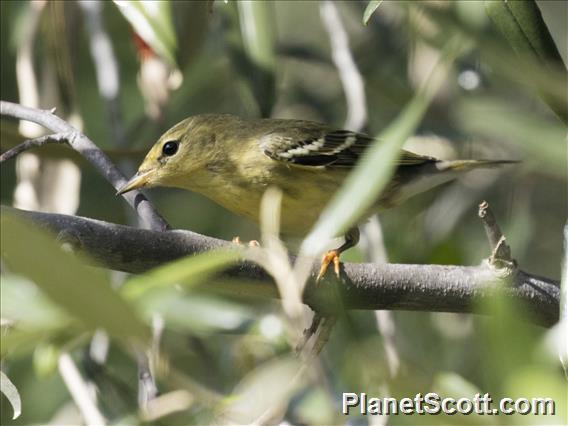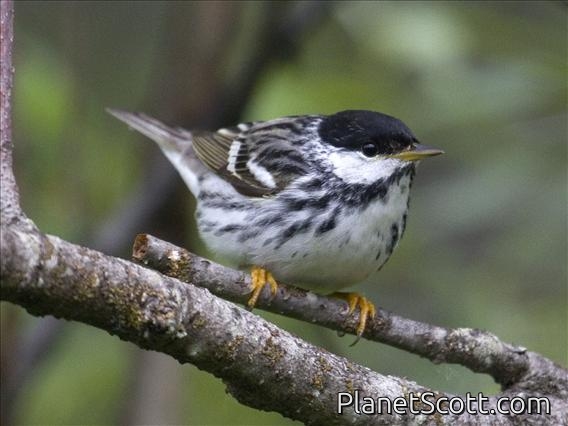Blackpoll Warbler (Setophaga striata)






About Blackpoll Warbler (Setophaga striata)
- Kingdom: Animals
- Phylum: Chordates
- Class: Birds
- Order: Perching Birds
- Family: New World Warblers
The blackpoll warbler is a New World warbler. Breeding males are mostly black and white. They have a prominent black cap, white cheeks, and white wing bars. The blackpoll breeds in forests of northern North America, from Alaska throughout most of Canada, to the Adirondack Mountains of New York as well as New England in the Northeastern United States. They are a common migrant throughout much of North America. In fall, they fly south to the Greater Antilles and the northeastern coasts of South America in a non-stop long-distance migration over open water, averaging 2,500 km (1,600 mi), one of the longest-distance non-stop overwater flights ever recorded for a migratory songbird. Rare vagrants to western Europe, they are one of the more frequent transatlantic passerine wanderers.
Source: Wikipedia
Visits
-
2006-11-19
Banos, Ecuador -
2010-06-08
Talkeetna, United States of America -
2013-04-19
Bolivar Peninsula, United States of America -
-
-
-
-
-
-
-
-
-
-






